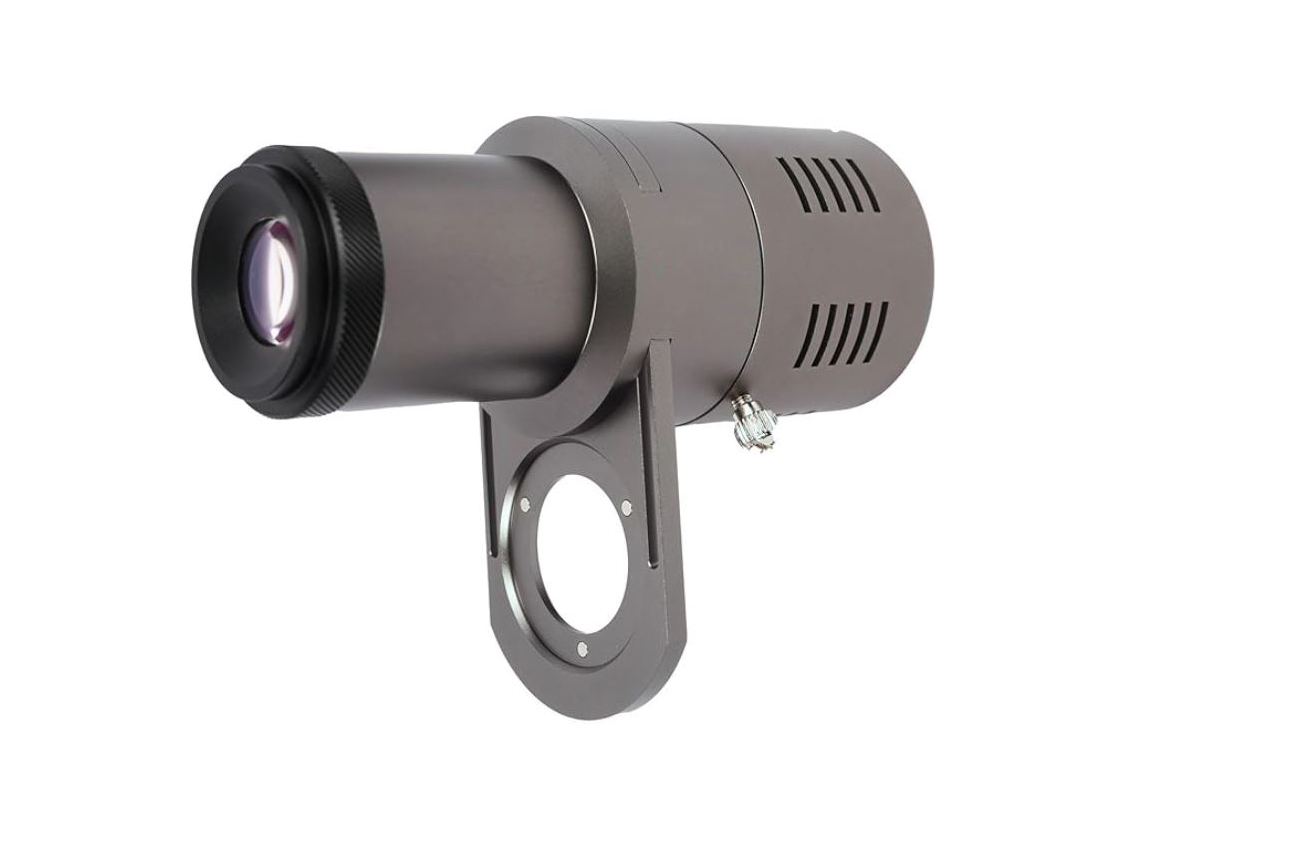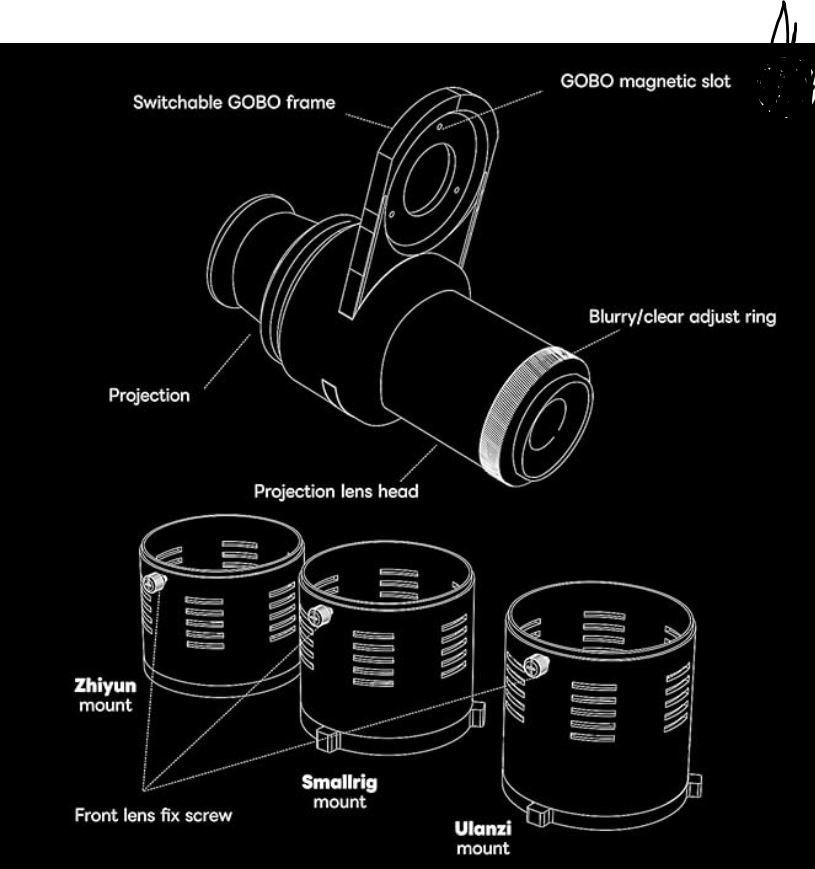DigitalFoto Optical Snoot Review – Tiny & Capable
24 Jul 2024, Posted by in Reviews, Uncategorized
The optical snoot (my that’s a funny name) is a light modifier that focuses the light from an existing instrument… LED light, in such a way that you can use a gobo to shape the light, creating designs or breakups. Gobos are one of the basic tools you find in theatre lighting; they’ve been around for decades and can be found on everything from Broadway productions to 50-seat community theatre houses. One of the reasons that it took so long for them to become popular in the video world, is that they required an ellipsoidal style light— an instrument that can focus and throw the light so that a pattern, placed inches from the source, creates a hard shadow on the surface dozens of feet away. Ellipsoidals are big, heavy, and expensive, and until about 15 years ago you wouldn’t find them outside a professional studio. LED lights have given us the power and lightness we need to create hard shadows; the optical snoot focuses the light inches from the source to create the pattern. It’s an optical snoot because it has a lens, similar to a camera lens, that handles the focusing. Three years ago I reviewed a no-brand snoot, and it gives both examples of a optical snoot in action, and background to understand how it works.
The shortcoming of that snoot (and many others) is that they’re fairly large and bulky. It’s like carrying another light. I found very few instances where I wanted to take it with me. The DigitalFoto Optical Snoot solves that problem. It’s surprisingly tiny, smaller than many lenses. It’s still hefty like a good quality lens– made of metal and glass, and very well built.

The Digitalfoto Optical Snoot is designed for a “mini Bowens mount,” the type found on many Smallrig, Godox, and Zhuyin small lights. It will not work on a full-sized light.
Some optical snoots reduce the amount of light significantly (I talk more about this in the video), and I was happy to see that this isn’t really the case with the DigitalFoto. I’m guessing that aperture in the lens is equivalent to F/1.2. Since the gobo design is projected in light, it has to compete against the ambient light that’s already in the room, and this one does a good job, even with a 40W light. And it’s great that it comes with a couple of different mini mounts to make it compatible with a variety of light manufacturers. Keep in mind that unlike a Bowens mount, there is no standard “mini Bowens” mount size. Many manufacturers size their mounts and accessories to fit the light.
I do have a couple of “wishes,” though. The sliding gobo holder, while ingenious, makes it more difficult to fit into a camera bag (and frankly I don’t see the point of having a second design loaded and ready to go). A single gobo holder would allow it to fit into a lens compartment. And I do wish that they had provided a couple of “practical” gobos, such as blinds or windows, which would be more useful on commercial shoots. The 14 are largely abstracts, or nonsensical images like fire, moon behind clouds, lightening, etc. The gobos are smaller than I’ve ever seen (and I’m a professional lighting designer), with no size indication that would help you buy others. In the old days we often made our gobos from pie tins. The ability to “cut” the light would have been nice as well. You can learn how it compares to other optical snoots on our in-depth comparison blog post.
While its bigger and more poorly constructed, the no-name brand optical snoot in the video does have one advantage over this compact snoot. You can mount different lenses to vary the size and throw of the gobo light. Of course, you have to own those lenses, and then bring them with you. All in all, I’d pack this little gem first.
Sorry, the comment form is closed at this time.